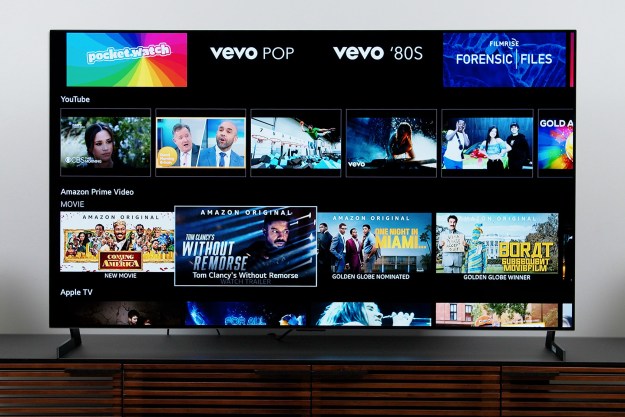Hold on to your butts. The streaming wars are just getting started.
In what appears to be a sign of things to come, Apple and Disney seemingly fired shots across the bows of two of their biggest streaming competitors, Amazon and Netflix. And signs point to this being just the first of many moves all four companies are going to make in the quest to attract subscribers to their respective streaming services.
With Apple set to launch its Apple TV+ service November 1, the Amazon Prime Video app has conspicuously gone missing from Apple’s App Store. Reports indicate that the app began disappearing Friday, October 4, with App Store users discovering that although the app for Amazon’s streaming service is still functional on their devices, it had disappeared from the available options in the digital store for Apple devices.
The amazon prime video app is gone from the App Store? ???? @PrimeVideo pic.twitter.com/wtiyIBCI3u
— Adrian (@emoflipsan) October 4, 2019
Later on Friday, an Amazon spokesperson told Digital Trends that the app disappeared due to a “technical glitch” that has since been resolved, and that the Prime Video app is now back in the App Store — but the disappearance came at a particularly tense time in relation to a recent line-in-the-sand move by Disney.
The massive entertainment company is reportedly banning ads for industry-leading streaming service Netflix across all of its TV networks — a not-inconsequential list that includes ABC, ESPN, and other major networks. The ban on Netflix ads comes as Disney plans to launch its own Disney+ streaming service in mid-November, just a few weeks after Apple TV+ makes its debut.
If recent history has taught us anything about the streaming wars, cord-cutting TV audiences could be in for a long, annoying battle between these media titans that might do more harm than good for everyone involved.
It wasn’t that long ago when Google and Amazon had engaged in a similar feud, with Amazon’s Fire TV devices prevented from offering content from Google-owned YouTube, and the latter’s Chromecast suite of streaming devices maintaining a ban on Amazon Prime Video content. The cold war between the two tech giants spanned multiple years before they finally reached a compromise in July 2019 to allow their devices to play nice with their competitor’s content.
In the end, the winner of that war ended up being Roku — the popular creator of streaming devices that somehow managed to remain neutral throughout it all and offer the only option for streaming content from all of the available video services.
Roku still dominates the market when it comes to streaming devices — due in no small part to its ability to stay above the fray — and could end up victorious again if this cold war between Amazon, Apple, Disney, and Netflix continues. With Apple offering its own Apple TV device along with millions of iPhones, iMacs, and other devices pre-loaded with the Apple TV+ framework, and Disney able to weaponize its massive multimedia holdings, both companies are entering the streaming landscape with plenty of power before their respective streaming services launch.
Given how long it took Google and Amazon to recognize that it was better to compromise than to segment the market, we’ll see whether Apple and Disney reach a similar conclusion. It’s hard to imagine a world in which Apple TV+ and Disney+ aren’t available on Amazon’s Fire TV devices, for example, but it’s a possibility. The same could be said for Netflix vanishing from Apple devices — or Amazon Prime Video never returning, for that matter.
One thing seems certain: This streaming war is just beginning, and even if Roku emerges victorious again, we all stand to lose some entertainment options until the companies sort out their differences.
Editors' Recommendations
- The 10 most popular streaming services, ranked by subscriber count
- The streaming services will continue to nickel-and-dime us all — because they can
- Everyone is missing the point on streaming video
- Amazon Prime Video is failing with its Thursday Night Football stream
- Amazon Prime Video’s Thursday Night Football stream bad for some, again




